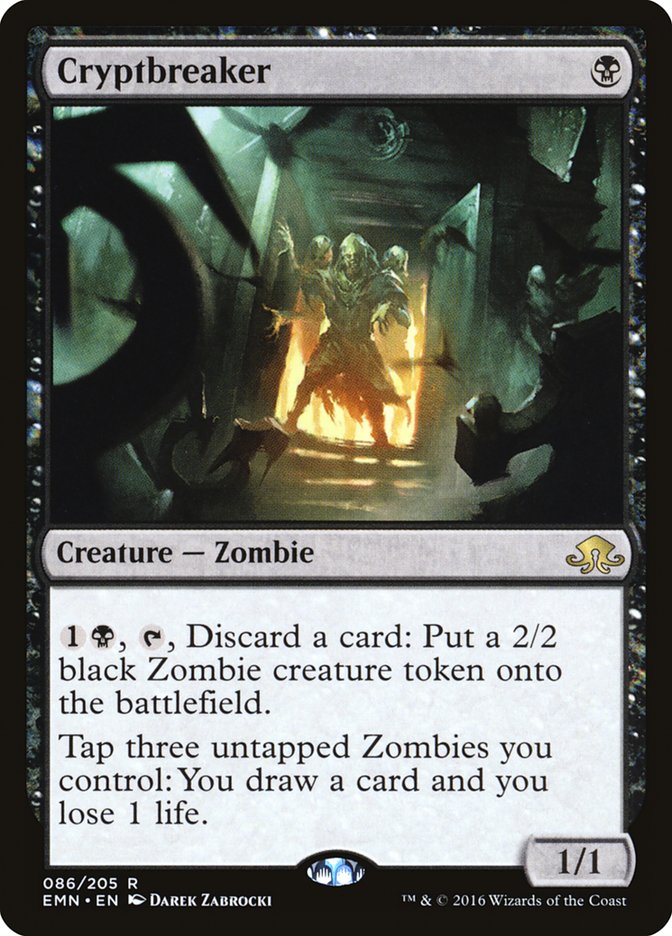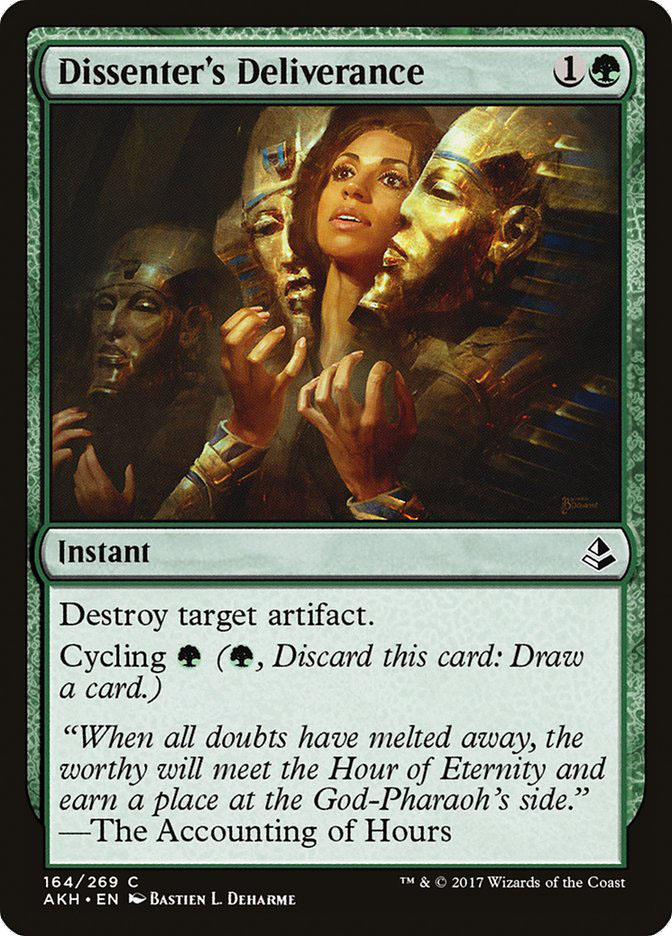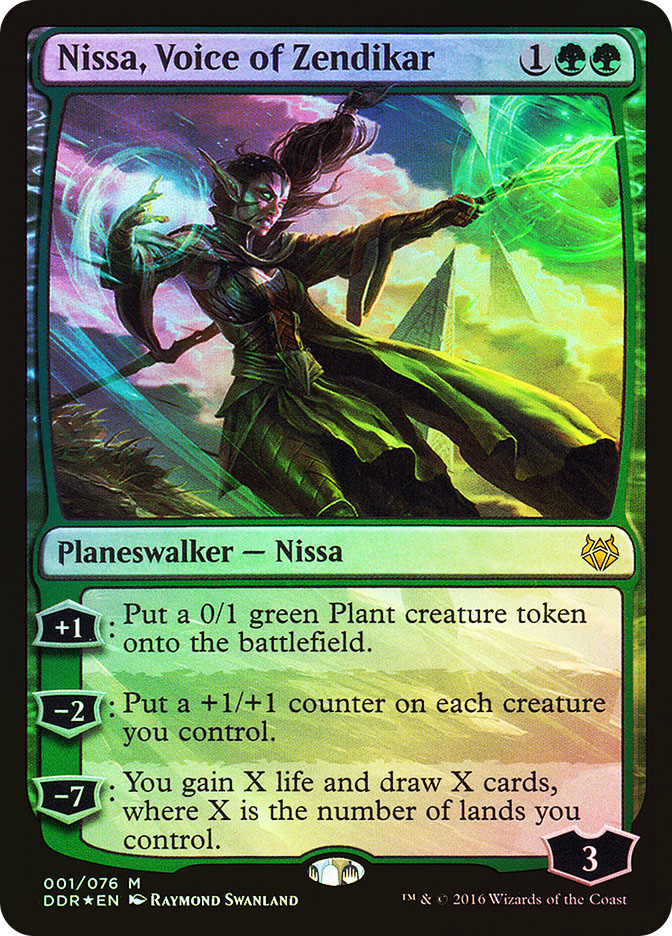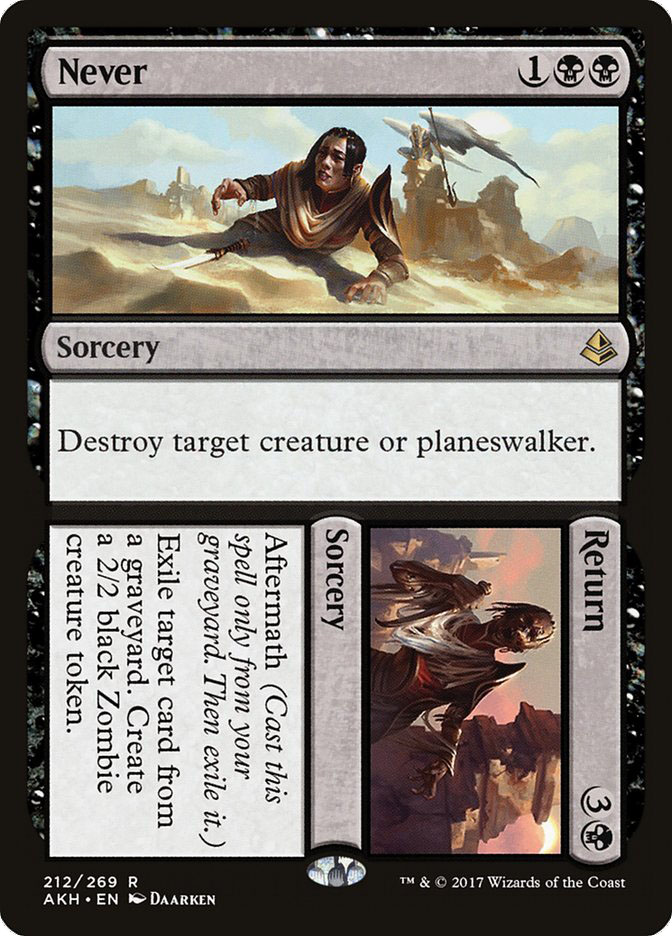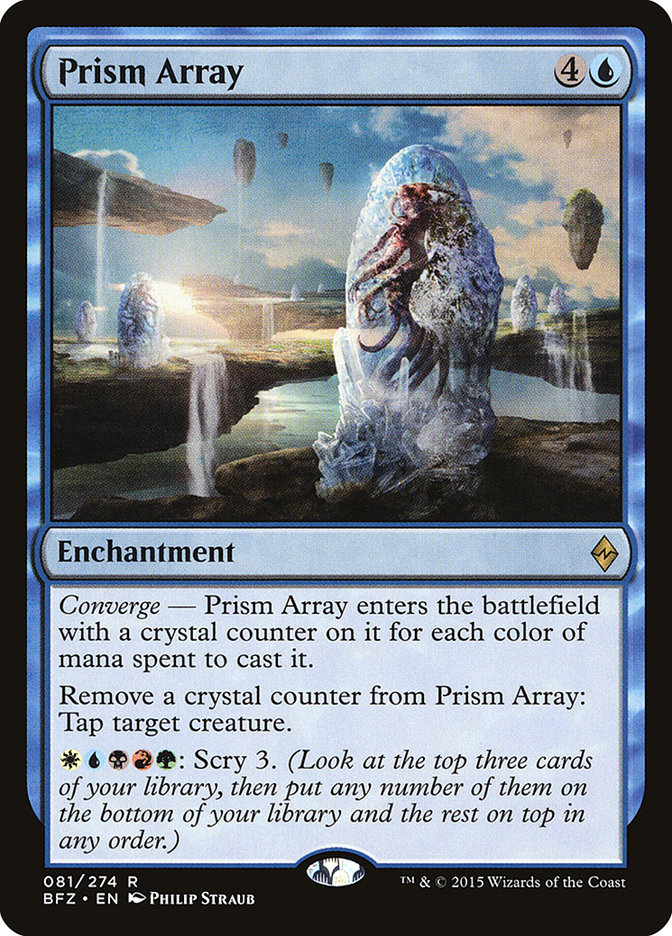Fun Fact:
Every Pro Tour Tireless Tracker has been legal (five so far), I’ve had four
registered in my decklist!
Only one of those lists didn’t have four Tireless Trackers in the maindeck;
Bant Company had one in my sideboard and three maindeck. Good thing they’re
tireless, because they’ve been doing a lot of work for me!
Fun Fact:
I’ve gone 11-5 in three of those five Pro Tours, 11-6 in one (where I
conceded the last round) and scrubbed out Pro Tour Oath of the Gatewatch thanks to the Draft portion, where I played
G/W Tokens in Constructed, which was probably the best deck I’ve ever
played in a Pro Tour.
I’m not sure exactly what to take away from this, but I feel like Tireless
Tracker is an excellent card.
Obviously 11-5 at Pro Tour isn’t as flashy as big Top 8 finishes, but I’ve
had my fair share of those, and I’m happy putting up consistent results as
well.
It also puts me tied for first place in the
Standard Master race
heading into the final Pro Tour of the season.
Not bad!
So how did I end up going 11-5 at
Let’s start with the decklist:
Creatures (21)
- 1 Kalitas, Traitor of Ghet
- 4 Tireless Tracker
- 4 Grim Flayer
- 2 Verdurous Gearhulk
- 4 Winding Constrictor
- 2 Rishkar, Peema Renegade
- 4 Walking Ballista
Planeswalkers (4)
Lands (22)
Spells (13)

This is very similar to what I
Aether Revolt
, although it took quite some time to actually figure out that the deck was
still good.
My thought process was about what the best deck was shifted regularly
during testing. At certain points I was sure I would be playing Temur
Aetherworks before eventually deciding that Zombies was completely broken.
But with time and practice I felt both decks had major flaws with
consistency and were not what I was looking for.
Temur Aetherworks and Zombies were known entities heading into the Pro Tour
and still some of the best performing decks of the tournament (Congrats to
GerryT for winning the whole thing!), yet I was still happy playing B/G,
even after the fact.
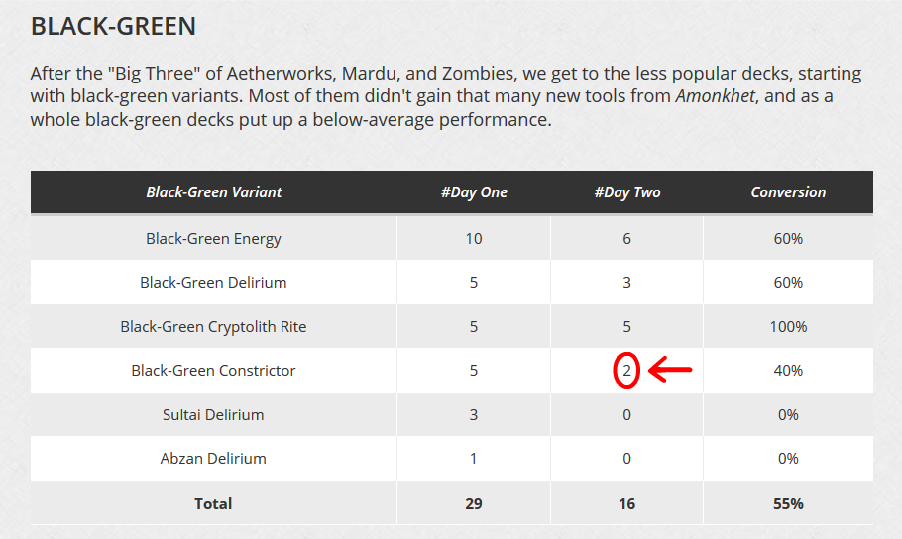
The two B/G Constrictor decks to make Day Two of the Pro Tour were me and
my brother, Dean. Would not exactly call it the breakout deck of the
tournament.
It’s interesting to me that almost nobody decided to pick up B/G decks for
the Pro Tour despite it not exactly being revolutionary or groundbreaking,
because B/G is consistent and performed well for me. It felt favored
against the big three decks of this Pro Tour: Mardu Vehicles, Temur
Aetherworks, and Zombies.
I wouldn’t blame you for thinking that Temur Aetherworks, Zombies, or even
Mardu Vehicles would be favored against B/G; I thought B/G was unfavored
against them all at some point too. In practice, I found that to not be the
case.
The quick clock, relevant interaction, new cards, and most
importantly, strong sideboard, made me feel it was a solid choice against
the expected metagame.
So what new tools did B/G get?
Dissenter’s Deliverance is the most exciting new card to add to the deck.
First of all, it’s amazing against the premier threats of the two biggest
cards I expected at the Pro Tour: Heart of Kiran and Aetherworks Marvel.
I won a lot of games against Aetherworks Marvel opponents who would have a
chance to spin their Aetherworks Marvel, but missed on Ulamog, the
Ceaseless Hunger, then had there Aetherworks Marvel delivered to the
graveyard.
Dissenter’s Deliverance also plays amazingly against Heart of Kiran,
allowing you to preemptively blow it up before it’s crewed, which allows
you to land an uncontested turn 3 Nissa, Voice of Zendikar or Liliana, the
Last Hope. It would otherwise likely mess up your curve in the early game
if you had to wait for an extra mana to keep up Fatal Push to protect your
Planeswalkers.
Dissenter’s Deliverance also helped the mana base of the deck a great deal
by making it so you didn’t have to play Grasp of Darkness, and being able
to have a “removal spell” also be card draw was incredible against control
decks.
But Wait, There’s More!
Dissenter’s Deliverance kills…

But There’s Still More!
Being able to cycle Dissenter’s Deliverance is fantastic for more than just
simply drawing a card. First of all, it helps a great deal towards enabling
delirium for Grim Flayer, Traverse the Ulvenwald, and Ishkanah, Grafwidow.
It also allows you to draw a card after you’ve hit your opponent with Grim
Flayer to stack the top of your deck, effectively allowing you to dig four
cards deep if you need to, turning it into Impulse for one green mana.
But There’s Still More!
Actually, you know what that? That about about covers it. But Dissenter’s
Deliverance is great.
I will never say Never is less than amazing. It’s not a strict upgrade to
Ruinous Path, but it plays much better the vast majority of the time, and
Ruinous Path was already very solid.
Just having access to a random 2/2 Zombie body would be reason enough to
play it, but exiling relevant cards and being able to mill Never with Grim
Flayer are nice bonuses as well. Zombies even matter for Kalitas, Traitor
of Ghet.
Those are the new relevant cards that got added to the maindeck.
A Note Regarding Tournament Hall Special Effects
The tournament hall had a fog machine. It also had dimmed lighting, with
different colored tinted lights being the main source of illumination. It’s
like they asked a focus group who had never played Magic before what should
be added to improve the Pro Tour and they came up with the idea: “Reduce
the visibility as much as possible and blow smoke at the competitors!” Next
Pro Tour I expect lasers and blasting techno music.
Seriously though, there’s no need to try and make Magic something it’s not.
Visibility and distractions are not helping the players, and I highly doubt
it’s increasing the quality of viewer experience that much.
Sideboarding in this Standard format is probably the most difficult it’s
ever been.
Temur Aetherworks, Mardu Vehicles, Zombies, and B/G all play multiple
different roles in some form, and all three usually become more controlling
post-sideboard.
I’m not sure if there are even any B/G players
left out there
, but for now it just still seems like a solid deck to me.
Sideboard And Matchup Guide
vs Mardu Vehicles
On the Play:
In:

Out:

On the Draw:
In:

Out:

Just casually bringing in thirteen cards.
Dissenter’s Deliverance and Never help game 1, and you were already doing
well thanks to four Fatal Push.
The tricky part is post-sideboard, because things start getting weird, but
this is probably where you are most advantaged.
The main advantage being that pretty much every Mardu list has a very
similar sideboard plan and we’re able to trump it. They try and go bigger
with Planeswalkers and lots of removal, so we go even bigger while
invalidating their removal.
For example Nissa, Voice of Zendikar might seem like a strange card to have
post-sideboard, but it’s great against an opponent with a handful of
Unlicensed Disintegration, Oath of Liliana, and Fatal Push.
Having Mardu opponents cast Oath of Liliana into an empty board is what
you’re aiming for.
vs Temur Aetherworks
On the Play:
In:

Out:

On the Draw:
In:

Out:

Temur Aetherworks is a very scary matchup. If they turn 4 Ulamog, the
Ceaseless Hunger you game 1, there isn’t really anything you can do to stop
it without the most busted of draws.
That said, things aren’t as bad as they seem if you’re willing to endure
the risk and realize it’s not as scary as it seems. I went 4-1 against it
at the Pro Tour and was consistently beating it online as well.
If your opponent is about 50% to draw Aetherworks Marvel in a given game
before they die, and they still have to get the energy to activate it, and
then they’re only 40% to hit Ulamog, the Ceaseless Hunger, those numbers
aren’t so bad for you at all.
Dispossess and Transgress the Mind are obviously going to be all-stars
here. Marvel players will expect this from you, so they’ll try and be able
to win the games where they don’t get to activate Aetherworks Marvel.
Assume they don’t hit Ulamog off Aetherworks Marvel and just try to out
value them: This was the realization that helped me start winning against
Temur Aetherworks with this archetype.
At the Pro Tour, I even sided out a Dispossess for game 3 after seeing my
opponent had sided down to only two Aetherworks Marvel in game 2 and was
going for a full midrange plan.
vs Zombies
On the Play:
In:
Out:

On the Draw:
In:

Out:

Zombies is a very appealing deck to play. It has nut draws with
Cryptbreaker. It’s potentially mono-colored and consistent. The creatures
are all efficient, synergistic, and deadly.
I found Zombies to have trouble either flooding out, or being stuck on too
few lands. There wasn’t anything like Traverse the Ulvenwald to help bridge
the gap. If Cryptbreaker survives you’re golden, but otherwise you just
seemed to fizzle out too often.
Fatal Push; Walking Ballista; Liliana, the Last Hope; and Kalitas, Traitor
of Ghet are great in this matchup, but Zombies can just overrun you if they
have a great curve.
The matchup is all about dealing with their key cards in Cryptbreaker and
Diregraf Colossus while stunting their early aggression and building your
battlefield up bigger than theirs before they reach critical mass.
It isn’t hard to go much bigger than them with Winding Constrictor and
Nissa, Voice of Zendikar or Verdurous Gearhulk if you aren’t under a lot of
early pressure.
Fight and Bite
I hope those of you trying to counter the big decks of the format and
unravel the mysteries of the Snake have as much fun playing the deck as I
did! Any other Snake-lovers left out there?



